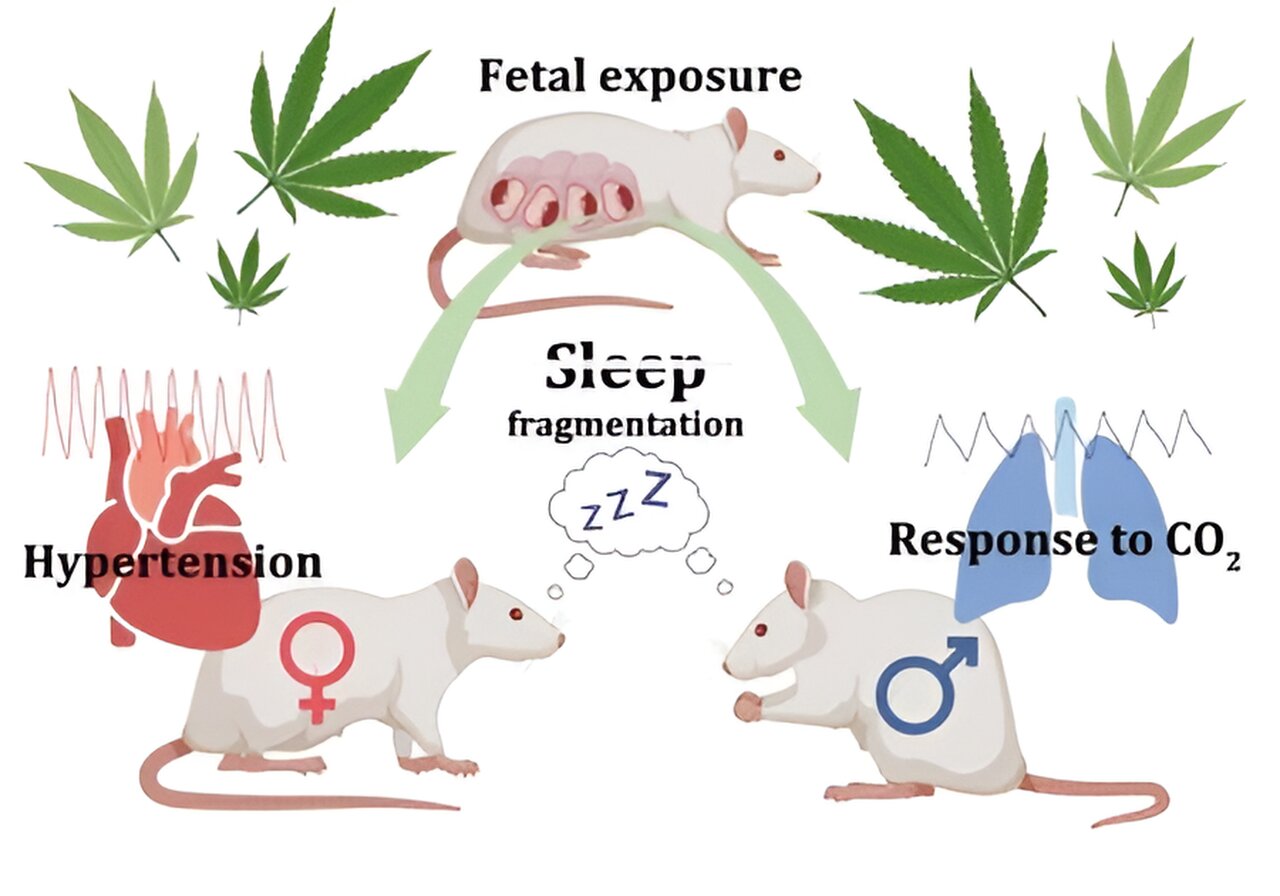
Scientists who exposed pregnant rats to a synthetic cannabinoid that activates the same receptors in the brain as marijuana detected effects of the drug on their offspring, such as cardiovascular problems in females and augmented susceptibility to panic attacks in males, and showed that these adverse effects persisted into adulthood.
An article on the study is published in the American Journal of Physiology—Lung Cellular and Molecular Physiology. The findings serve as a precautionary note on the medicinal or recreational use of cannabis during pregnancy, the authors conclude.
Previous research by the same group demonstrated the effects of intrauterine exposure to the cannabinoid on newborn and young rats.
“We observed long-term alterations to behavior and above all to cardiorespiratory function in the animals that were exposed to the cannabinoid while they were still in the womb. The alterations were different in males and females,” said Luis Gustavo Patrone, first author of the article. The study was part of his Ph.D. research while he was a doctoral candidate at the School of Agricultural and Veterinary Sciences (FCAV-UNESP) in Jaboticabal, São Paulo state, where he is now a postdoctoral fellow.
In contrast with the newborns in the previous study, the adult individuals (80 days old) analyzed in this latest trial did not display alterations to baseline respiration, possibly owing to some unknown compensation mechanism during postnatal development.
A finding that did not vary from one study to the other was that intrauterine exposure to the cannabinoid increased the adult males’ respiratory sensitivity to carbon dioxide (CO2). The opposite outcome was observed in the females.
“In humans, heightened sensitivity to CO2 can trigger panic attacks with shortness of breath and a false suffocation alarm. In the animals in our experiment, this type of behavior consisted of attempts to escape from the chamber,” said Luciane Gargaglioni, last author of the article and a professor at FCAV-UNESP.
Cardiovascular function and sleep
The researchers also analyzed cardiovascular factors and sleep quality in the animals, concluding that exposure to the cannabinoid during fetal development led to a propensity to experience cardiovascular dysfunction in adulthood, with hypertension and tachycardia being most frequently identified in females.
Sleep quality deteriorated most in males, who experienced sleep fragmentation due to frequent wakefulness episodes. “They slept less, considering the sum total of sleep episodes,” Patrone said. Sleep quality also deteriorated in females, but less severely.
“Most scientific studies assess parameters in males only, assuming that the results will be valid for both sexes, but in our lab we always make the distinction and the responses are often quite different, as in this study,” Gargaglioni said.
A possible explanation for the difference between outcomes in males and females may be the action of sex hormones. In females, estrogen is known to be neuroprotective and may ward off the harmful effects of the cannabinoid on their brains.
In addition, the mammalian respiratory system is known to develop more slowly in males, occurring mainly when testosterone levels peak during masculinization and formation of sexual organs. Later maturation of the lungs, and of the brain regions responsible for controlling respiratory function, probably made the males more vulnerable to the adverse effects of the cannabinoid.
The authors point out that observed postpartum maternal behavior did not exhibit differences in maternal care of offspring due to exposure to the cannabinoid during pregnancy compared with the control group, which did not receive the substance.
More information:
Luis Gustavo A. Patrone et al, Long-term effects on cardiorespiratory and behavioral responses in male and female rats prenatally exposed to cannabinoid, American Journal of Physiology-Lung Cellular and Molecular Physiology (2024). DOI: 10.1152/ajplung.00042.2024
Citation:
In rats, intrauterine exposure to cannabinoid affects cardiorespiratory function and sleep quality in adulthood (2024, October 3)
retrieved 6 October 2024
from https://medicalxpress.com/news/2024-10-rats-intrauterine-exposure-cannabinoid-affects.html
This document is subject to copyright. Apart from any fair dealing for the purpose of private study or research, no
part may be reproduced without the written permission. The content is provided for information purposes only.


